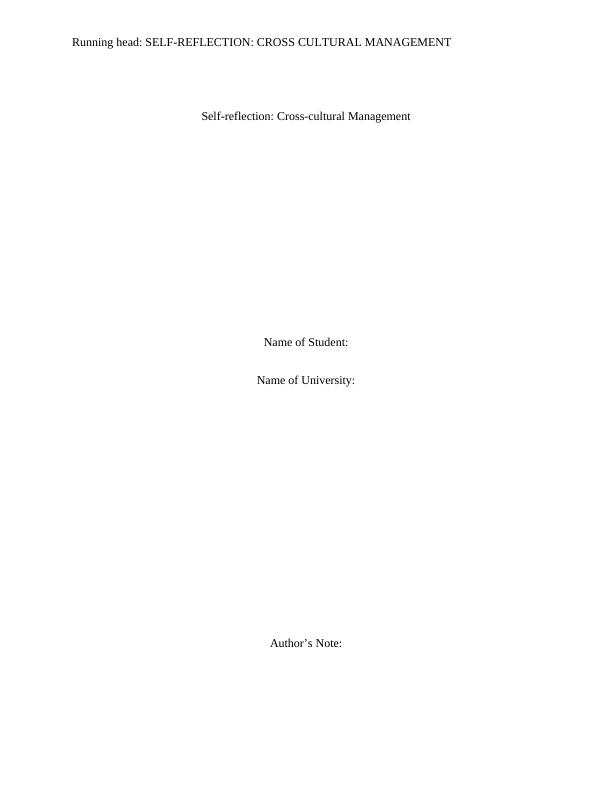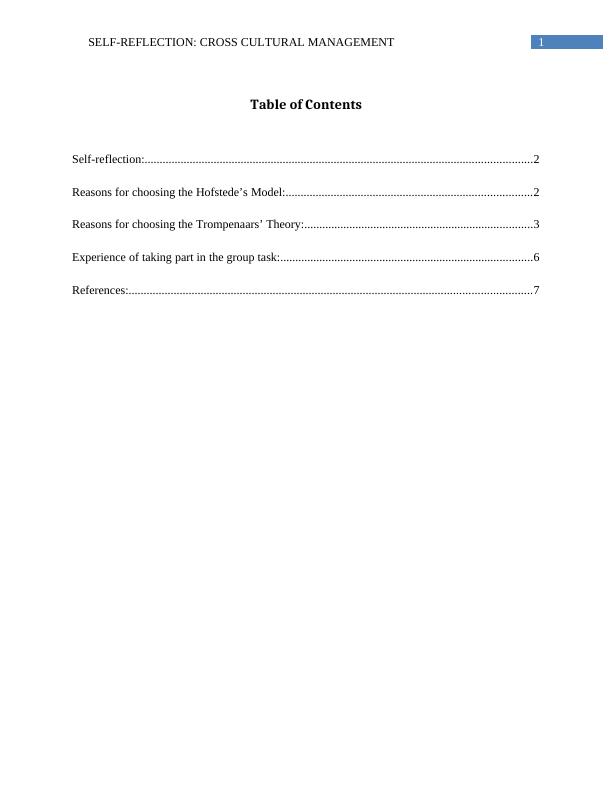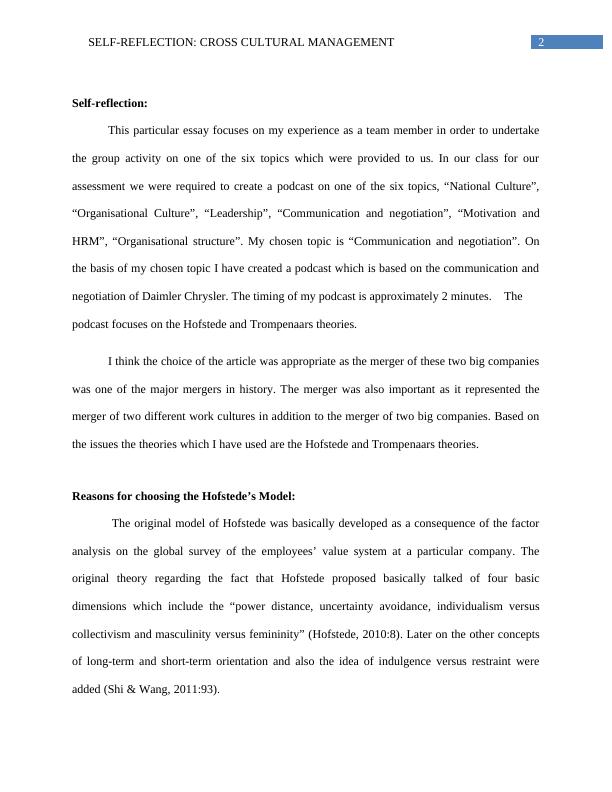Self-reflection: Cross-cultural Management
Added on 2021-04-19
9 Pages1911 Words225 Views
End of preview
Want to access all the pages? Upload your documents or become a member.
Trompenaars & Hampden-Turner Dimensions Model of Culture
|14
|1368
|326
Organizational Culture Assignment (Sample)
|9
|1740
|117
Reflective Report on Challenges in Multinational Companies
|7
|1555
|49
Managing Across Cultures: Importance of Cross-Cultural Communication
|6
|1644
|350
International Management (Distinction Criteria)
|8
|466
|408
Cross Culture Management
|8
|2279
|20


